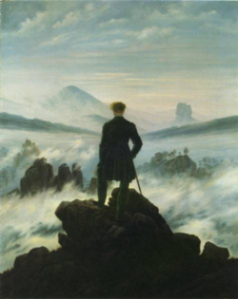 In addition to the Shobogenzo, another source of my reading as of late has been Journey to the West. Journey to the West is fascinating enough for its own sake as literature, but it is also interesting how it weaves together the three major spiritual traditions of China into one unproblematic mythology, raising Buddhist questions along the way.
In addition to the Shobogenzo, another source of my reading as of late has been Journey to the West. Journey to the West is fascinating enough for its own sake as literature, but it is also interesting how it weaves together the three major spiritual traditions of China into one unproblematic mythology, raising Buddhist questions along the way.
One of my favorite parts thus far, though I have not gotten too far along this one hundred chapter tome, is shortly after the Monkey Kind has been appointed the leader of the monkeys. Soon, amongst their play and frolicking, they realize they are subject to death. Terrified, the Monkey King asks around to find a way to be free from death, and is told by one wise old monkey that the Buddhas, Immortals, and Sages can deliver him from death, but that these great teachers are only present in the human world.
Determined, the Monkey King sets off on a journey to the human world to receive the teaching, and upon getting there he is shocked that none of the humans seem to care or think about the immediacy of death at all.
How typical, huh?
One of the thoughts that I personally find very inspiring, one that drives much of my practice, is the feeling of how fortunate I am to have been born in a time when the Dharma is still known in the world, and that I am in a situation where I am able to learn and practice.
There is a famous simile about how precious a human rebirth is involving a blind tortoise. The Buddha asked us to imagine a planet completed covered in water with a single inhabitant: a blind tortoise. Also on this planet is a single yoke that fits exactly around the neck of the tortoise floating upon the water’s surface. The winds on this planet blow the yoke hither and thither, and every one hundred years the blind tortoise surfaces for just a moment. The Buddha says that a human rebirth is even more rare than how rare it would be for the yoke to fit around the rising tortoise’s neck.
That is just for a human rebirth! Imagine being born as a human being during the age of the Dharma, and being in such a station as to be able to practice it! I imagine an appropriate addition would be some sort of blind mosquito, which flew around randomly and landed every one hundred years, aiming to hit the nose of the tortoise whom is perfectly ensnared by the yoke.
The Monkey King asks around, finding no one who shares his concern, nor anyone who is aware of where he can find a Buddha, Immortal, or Sage to practice under. Finally, when he does find someone to lead him to his first teacher, the man is too busy plowing his field and refuses to go along.
It is difficult, when I consider the rising and falling concerns of my every day life, to think I am doing anything more than plowing my field.
The Sun Wukong illustration was made by Hai Dang Quang and is liscenced under the GFDL
Read Full Post »
 Last week Andrea Miller posted a short story over on Shambhala Sun Space: “Remembering Koizumi” by Wendy Miyake. I’ve tried countless times in the past thirty minutes to try to give a one-sentence summary of this story. Each time I try, my words cannot seem to do the story justice. You just have to read it for yourself.
Last week Andrea Miller posted a short story over on Shambhala Sun Space: “Remembering Koizumi” by Wendy Miyake. I’ve tried countless times in the past thirty minutes to try to give a one-sentence summary of this story. Each time I try, my words cannot seem to do the story justice. You just have to read it for yourself.


